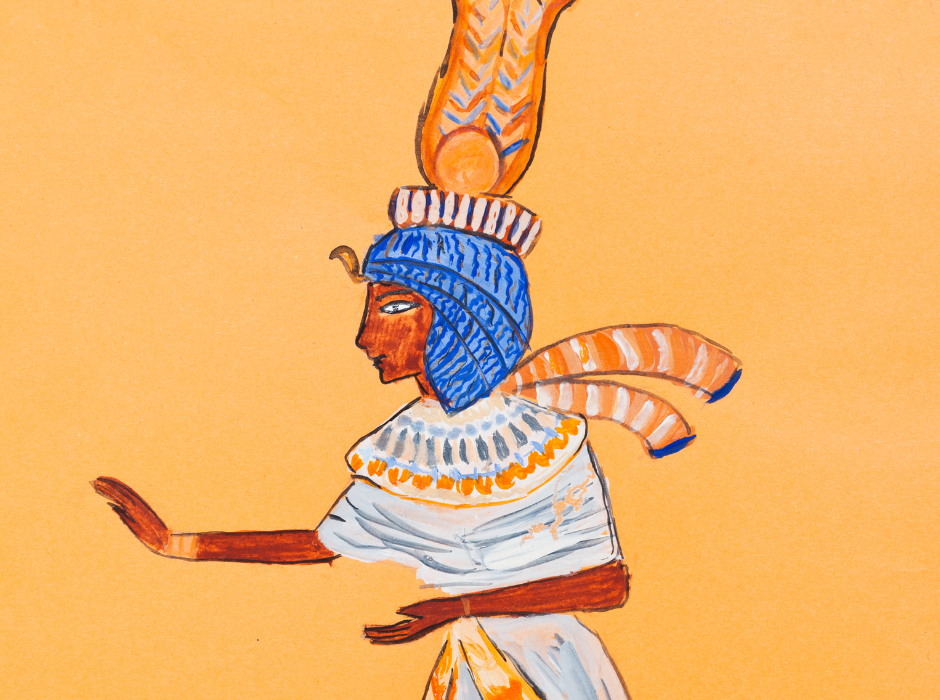Ancient Egypt, a civilization renowned for its rich history, captivating art, and monumental architecture, also had a unique sense of style when it came to clothing. The clothes worn by ancient Egyptians were not only practical for the hot and dry climate but also reflected their social status, beliefs, and cultural values. In this article, we will explore the various aspects of clothing in ancient Egypt, including the materials used, the styles and designs, and the symbolism found in their garments.
Materials: The Fabric of Ancient Egyptian Life
The choice of materials for clothing in ancient Egypt was primarily influenced by the local climate and available resources. The most commonly used fabric in ancient Egyptian clothing was linen, made from the fibers of the flax plant. Linen was an ideal choice for the hot and arid climate of Egypt, as it is lightweight, breathable, and highly absorbent. The process of producing linen involved harvesting the flax plants, soaking the fibers to separate them, and then spinning and weaving the fibers into cloth.
In addition to linen, ancient Egyptians also made use of other materials, such as wool, cotton, and animal hides. However, these materials were far less common and were typically reserved for specific purposes or used by certain segments of society.
Styles and Designs: A Reflection of Status and Identity
The styles and designs of clothing in ancient Egypt varied depending on factors such as social status, gender, occupation, and occasion. Some of the most common clothing items and styles in ancient Egyptian fashion include:
- Men’s Clothing: Egyptian men typically wore simple garments, such as kilts or loincloths, which were wrapped around the waist and secured with a belt. The length and design of the kilt varied depending on the individual’s social status, with higher-ranking individuals wearing longer and more elaborately decorated kilts. Upper-class men might also wear a light, pleated robe or shirt over their kilt for additional coverage and style.
- Women’s Clothing: Ancient Egyptian women primarily wore dresses or skirts, which were created by wrapping a large piece of linen around the body and securing it with a belt or sash. The length and style of the dress varied, with some reaching the ankles and others extending only to the knees. Wealthier women wore more elaborate dresses, featuring intricate pleats, folds, and decorative elements such as beads or embroidery.
- Headwear: Headwear was an important aspect of ancient Egyptian fashion and was often used to denote social status or religious significance. Common types of headwear included simple headbands, cloth caps, and wigs made from human hair or plant fibers. In addition, the pharaohs and other high-ranking officials wore distinctive headdresses, such as the nemes (a striped headcloth) and the uraeus (a cobra-shaped ornament), which symbolized their authority and divine connection.
- Footwear: Footwear in ancient Egypt was relatively simple, with most people going barefoot due to the hot climate. However, sandals made from papyrus, leather, or palm fibers were sometimes worn for protection or during formal occasions. Sandals were often decorated with beads, embroidery, or other adornments to reflect the individual’s social status.
- Accessories: Jewelry and other accessories played an important role in ancient Egyptian fashion, as they not only added beauty and elegance to the outfit but also held symbolic and protective qualities. Popular accessories included necklaces, bracelets, earrings, and amulets, which were made from materials such as gold, silver, semi-precious stones, and faience (a glazed ceramic material). The designs and motifs of these accessories often held religious or cultural significance, invoking the protection and favor of the gods.
Symbolism: The Deeper Meaning of Ancient Egyptian Clothing
Clothing in ancient Egypt was more than just a way to cover and protect the body; it also held symbolic and cultural meaning for the people who wore it. Some key aspects of symbolism in ancient Egyptian clothing include:
- Color: The colors used in ancient Egyptian clothing held symbolic significance, with certain hues associated with specific gods, qualities, or elements of nature. For example, red was associated with the sun god Ra and the life-giving force of the sun, while green symbolized growth, fertility, and the god Osiris.
- Patterns and Motifs: Ancient Egyptian clothing often featured intricate patterns and motifs, which held symbolic meaning for the wearer. These designs might include religious symbols, such as the ankh (a symbol of eternal life) or the Eye of Horus (a protective amulet), as well as natural elements, such as lotus flowers (a symbol of rebirth) or palm fronds (a symbol of victory).
- Social Status: Clothing in ancient Egypt was a clear indicator of an individual’s social status, with wealthier and higher-ranking individuals wearing more elaborate, finely crafted garments. The quality and decoration of one’s clothing served to communicate one’sposition and prestige within society.
- Religious Significance: Clothing often played a vital role in ancient Egyptian religious practices, with specific garments worn by priests, temple attendants, and other religious officials. These garments were often adorned with symbols and motifs associated with the gods, reinforcing the wearer’s connection to the divine.
- Funerary Garments: Ancient Egyptians believed that the clothes worn in the afterlife were just as important as the ones worn in their earthly life. High-quality, beautifully decorated garments were often included in an individual’s burial, ensuring that they would be well-dressed and protected in the afterlife.
In conclusion, clothing in ancient Egypt was a complex and multifaceted aspect of the civilization’s culture, reflecting the values, beliefs, and social structures of the people who lived there. From the simple linen garments worn by commoners to the elaborate, symbolic attire of the pharaohs and priests, the clothes of ancient Egypt offer a unique and fascinating insight into the lives and identities of the people who shaped this remarkable civilization. As you delve into the world of ancient Egyptian fashion, take the time to appreciate the intricate designs, rich symbolism, and enduring beauty of the garments that have captivated our imaginations for millennia.

